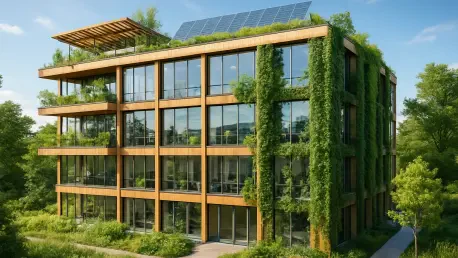As we dive into the world of sustainable building design, I’m thrilled to sit down with Luca Calarailli, a renowned expert in construction, design, and architecture. With a deep passion for integrating cutting-edge technology into the industry, Luca has been at the forefront of innovative projects that redefine what’s possible in sustainable development. Today, we’re exploring one such groundbreaking project—Edinburgh’s 30 Semple Street office development, a beacon of environmental excellence and a testament to forward-thinking design. Our conversation will touch on its record-breaking sustainability certifications, the vision behind achieving net zero carbon operations, and the strategies used to future-proof this remarkable building for generations to come.
What makes 30 Semple Street a landmark project as Scotland’s first BREEAM Outstanding-certified office building?
Thank you for having me. What sets 30 Semple Street apart is its incredible BREEAM score of 93.2%, which is not only the highest in Scotland for an office building but across all property types there. This certification reflects a holistic approach to sustainability, from energy efficiency to material selection. Key features include a complete strip-back of the original structure to its bare frame, the addition of two new floors, and a modern 360-degree façade that maximizes natural light. We also incorporated flexible floorplates and operable windows, enhancing occupant comfort while slashing energy use. It’s a design that prioritizes both environmental impact and user experience.
How did the refurbishment process position this building as the second highest-scoring completed refurbishment globally?
Achieving that global ranking was no small feat. It required meticulous attention to every detail of the refurbishment process. We faced challenges like balancing the preservation of the existing structure with the need for modern, high-performance systems. The team pushed boundaries by integrating advanced sustainability measures, ensuring that every aspect—from insulation to HVAC systems—met the highest international standards. What made it stand out globally was our commitment to not just meeting but exceeding benchmarks, setting a new bar for what refurbishments can achieve in terms of sustainability.
Can you walk us through how 30 Semple Street is designed to operate at net zero carbon status?
Absolutely. The design aligns with the UK Green Building Council’s framework for net zero carbon, which focuses on minimizing operational energy use and offsetting any remaining emissions. We incorporated high-efficiency systems for heating, cooling, and lighting, alongside renewable energy sources to power the building. Additionally, the structure was optimized for passive energy savings, like using natural ventilation and daylight to reduce reliance on mechanical systems. It’s about creating a building that doesn’t just consume less but actively contributes to a carbon-neutral future through smart design and technology.
The term ‘future-proofing’ has been mentioned in relation to this project. What does that mean for a building like 30 Semple Street?
Future-proofing in this context is about designing a space that can adapt to evolving needs—whether that’s changing workplace dynamics or stricter environmental regulations. For 30 Semple Street, this meant creating flexible floorplans that can accommodate different tenant layouts and uses over time. We also built in scalability for tech upgrades, like smarter energy management systems. This adaptability benefits occupants by providing a workspace that remains relevant and comfortable, while for investors, it ensures the asset retains value and appeal in a rapidly changing market.
The building has also earned certifications like NABERS 5, Air-Rated Platinum, and Active Score Platinum. Can you explain what these signify and their impact?*
Each of these certifications highlights a different strength of the building. NABERS 5* reflects exceptional energy efficiency in operation, a critical factor for tenants looking to cut costs and carbon footprints. Air-Rated Platinum signifies top-tier indoor air quality, ensuring a healthy environment for occupants. Active Score Platinum focuses on promoting physical activity through design, like easy access to bike storage and pedestrian-friendly features. Together, these make 30 Semple Street incredibly attractive to tenants who prioritize sustainability and wellness, setting it apart in a competitive market. They weren’t just bonuses; achieving these was embedded in our vision from the start.
The design team’s dedication to sustainability has been praised. Can you share some specific ways they went above and beyond for this project?
The team’s commitment was evident in every decision, big and small. For instance, they spent extra time sourcing materials with low embodied carbon, even if it meant longer lead times. They also fine-tuned the building’s orientation and window design to maximize natural light and ventilation, reducing energy needs without compromising aesthetics. There were countless late-night brainstorming sessions to solve complex issues, like integrating renewable energy systems seamlessly into the refurbishment. It was this relentless focus on sustainability at every turn that made the difference.
Looking ahead, what is your forecast for the future of sustainable office developments based on projects like 30 Semple Street?
I’m optimistic about where we’re headed. Projects like 30 Semple Street are setting a new standard, showing that high sustainability doesn’t mean sacrificing quality or functionality. I think we’ll see more buildings aiming for net zero carbon as a baseline, not a bonus, driven by both regulation and market demand. Technology will play a bigger role—think AI-driven energy management and advanced materials that further cut emissions. My forecast is that within a decade, buildings like this will be the norm, not the exception, as the industry fully embraces the urgency of climate action.









